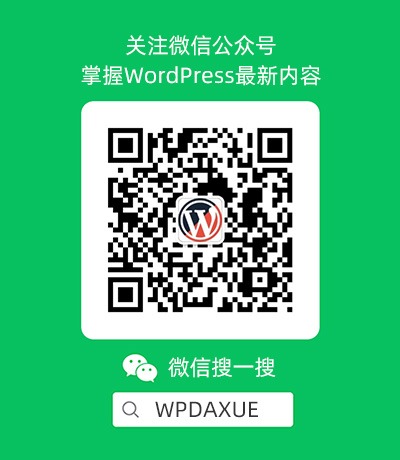文本是《开发你的 WordPress 主题框架(共10篇)》专题的第 3 篇。阅读本文前,建议先阅读前面的文章:
在之前的课程中,您已经了解并学习了主题框架的工作方式和开发途径。
现在是时候深入探讨一些代码了!
在本教程中,您会采用一个基本的主题,然后编辑模板文件,为主题框架添加相关挂钩和函数做好准备。本教程旨在整理主题,减少代码重复,这意味着您要为循环建立包含文件(include files)。
您将不必在子主题中创建重复循环,当您创建新的模板文件时,或者您需要编辑循环时,您只需做一次就行了。
注:起始文件在我的系列课程《从静态HTML中创建一个WordPress主题》而创建的基础之上,稍作了些改动。您可以从GitHub库相关系列中去下载它们。
您需要做的是
跟随本教程,您需要
- 安装一个WordPress开发环境
- GitHub库相关系列中的起始文件或者起始主题文件
- 一个代码编辑器
为循环建立包含文件
我会为我的框架建立三个循环:
- 一个用于存档(包括主博客页面)
- 一个用于单篇文章
- 一个用于页面
这是因为我想让其中的每一个循环与其他的显示起来都略有不同。
尽管将会有三个循环,但相比较于每一个模板文件中都包含一个循环而言,这会更加高效。
主循环
主循环会用于存档和主博客页面。在您的主题文件夹中,创建一个名为loop.php的文件。
从archive.php中将下列代码复制到loop.php文件中:
<?php
/* Queue the first post, that way we know if this is a date archive so we can display the correct title.
* We reset this later so we can run the loop properly with a call to rewind_posts().
*/
if ( have_posts() )
the_post();
?>
<h2 class="page-title">
<?php if ( is_day() ) { ?>
Archive for <?php echo get_the_date();
}
elseif ( is_month() ) { ?>
Archive for <?php echo get_the_date('F Y');
}
elseif ( is_year() ) { ?>
Archive for <?php echo get_the_date('Y');
}
else {
echo get_queried_object()->name;
} ?>
</h2>
<?php rewind_posts(); ?>
<?php // start the loop ?>
<?php while ( have_posts() ) : the_post(); ?>
<article id="post-<?php the_ID(); ?>" <?php post_class(); ?>>
<h2 class="entry-title">
<a href="<?php the_permalink(); ?>" title="<?php printf( esc_attr__( 'Permalink to %s', 'compass' ), the_title_attribute( 'echo=0' ) ); ?>" rel="bookmark">
<?php the_title(); ?>
</a>
</h2>
<section class="left image quarter">
<?php if ( has_post_thumbnail() ) { ?>
<a href="<?php the_permalink(); ?>">
<?php the_post_thumbnail( 'medium', array(
'class' => 'left',
'alt' => trim(strip_tags( $wp_postmeta->_wp_attachment_image_alt ))
) ); ?>
</a>
<?php } ?>
</section><!-- .image -->
<section class="entry-meta">
<p>Posted on <?php the_date(); ?> by <?php the_author(); ?></p>
</section><!-- .entry-meta -->
<section class="entry-content">
<?php the_content(); ?>
</section><!-- .entry-content -->
<section class="entry-meta">
<?php if ( count( get_the_category() ) ) : ?>
<span class="cat-links">
Categories: <?php echo get_the_category_list( ', ' ); ?>
</span>
<?php endif; ?>
</section><!-- .entry-meta -->
</article><!-- #01-->
<?php endwhile; ?>
<?php // ends the loop ?>
您并不需要去显示主博客页面上的标题,所以在第一个循环上添加一个条件标签,以检查我们是不是该网页上:
if ( ! is_front_page() ) {
}
第一个循环当前会如下所示:
if ( ! is_front_page() ) {
if ( have_posts() )
the_post();
?>
<h2 class="page-title">
<?php if ( is_day() ) { ?>
Archive for <?php echo get_the_date();
}
elseif ( is_month() ) { ?>
Archive for <?php echo get_the_date('F Y');
}
elseif ( is_year() ) { ?>
Archive for <?php echo get_the_date('Y');
}
else {
echo get_queried_object()->name;
} ?>
</h2>
<?php rewind_posts();
} ?>
现在,您需要在相关模板文件中包含这个循环。在archive.php和index.php文件中,将现有的循环替换为get_template_part()标签,其中包含了您的循环文件:
<?php get_template_part( 'loop' ); ?>
现在您有了一个用于存档的工作循环。
页面循环
接下来,您将为页面创建一个循环文件。创建一个名为loop-page.php的文件。
从现有的page.php文件中将下列循环代码复制到loop-page.php文件:
<?php
// Run the page loop to output the page content.
if ( have_posts() ) while ( have_posts() ) : the_post(); ?>
<article id="post-<?php the_ID(); ?>" <?php post_class(); ?>>
<?php if ( ! is_front_page() ) { ?>
<h2 class="entry-title"><?php the_title(); ?></h2>
<?php } ?>
<section class="entry-content">
<?php the_content(); ?>
</section><!-- .entry-content -->
</article><!-- #post-## -->
<?php endwhile; ?>
现在在主题的所有页面模板中(page.php 和 page-full-width.php),使用下面的代码替换循环:
<?php get_template_part( 'loop' , 'page' ); ?>
文章页循环
最后,您将为单篇文章页面创建一个循环文件,用于普通的文章和您将来创建的任何自定义的文章类型。这和主循环是相似的,只是它不包括该文章的链接,也没有初始循环,用来检查我们的存档情况。
建立一个名为loop-single.php和另一个名为single.php的文件。
将index.php文件中的内容复制到single.php文件,并在文件的初始位置编辑说明和循环,如下所示:
<?php get_template_part( 'loop', 'single' ); ?>
现在,在single-loop.php文件中,复制代码到loop.php文件,不包括查询档案的第一个循环。在循环内编辑初始标题标签并取消链接,代码如下:
<?php while ( have_posts() ) : the_post(); ?>
<article id="post-<?php the_ID(); ?>" <?php post_class(); ?>>
<h2 class="entry-title">
<?php the_title(); ?>
</h2>
<section class="left image quarter">
<?php if ( has_post_thumbnail() ) { ?>
<a href="<?php the_permalink(); ?>">
<?php the_post_thumbnail( 'medium', array(
'class' => 'left',
'alt' => trim(strip_tags( $wp_postmeta->_wp_attachment_image_alt ))
) ); ?>
</a>
<?php } ?>
</section><!-- .image -->
<section class="entry-meta">
<p>Posted on <?php the_date(); ?> by <?php the_author(); ?></p>
</section><!-- .entry-meta -->
<section class="entry-content">
<?php the_content(); ?>
</section><!-- .entry-content -->
<section class="entry-meta">
<?php if ( count( get_the_category() ) ) : ?>
<span class="cat-links">
Categories: <?php echo get_the_category_list( ', ' ); ?>
</span>
<?php endif; ?>
</section><!-- .entry-meta -->
</article><!-- #01-->
<?php endwhile; ?>
保存这两个文件。现在,所有的循环文件您都准备好了。
小结
从长远来看,使用一个主题框架之前,先整理主题并减少代码重复将会节省下不少的工作时间。
当您开始创建子主题并和父主题一起使用时,您会发现自己在建立自定义循环的同时,也在以一种完全正确的方式完成一个给定项目的内容。有了三个独立的循环,您就会避免在子主题中建立重复的模板文件,因为您只需要建立重复循环文件就行了。
- 原文出自:http://code.tutsplus.com/tutorials/creating-the-starting-files-for-your-wordpress-theme-framework–cms-21662
- 由 stonetan@WordPress大学 原创翻译,未经允许,禁止转载和采用本译文。
您已阅读完《开发你的 WordPress 主题框架(共10篇)》专题的第 3 篇。请继续阅读该专题下面的文章:






➡ ➡ ➡ 看到这就看不懂了..可能是我理解能力太差了,有视频什么的么
“Now in single-loop.php, copy the code in loop.php, not including the first loop looking for archives”这样翻译似乎更准确一点:复制loop.php中的代码到single.php文件。注意不要包含用于存档的第一个循环。
过来学习了,授人以鱼不如授人以渔,感谢